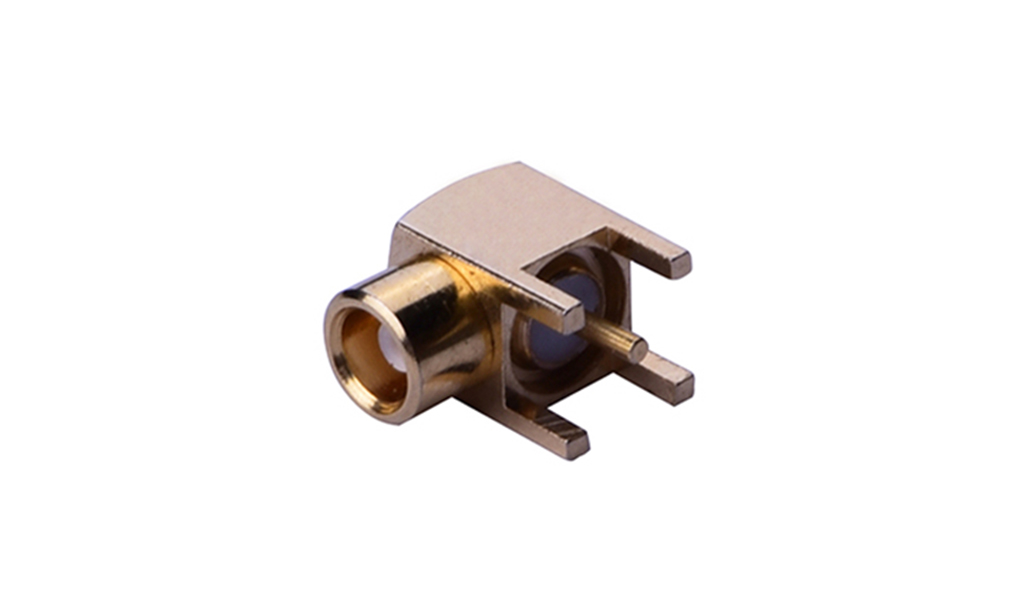RF PCB connectors are electrical assemblies specifically designed to connect high-frequency signals on printed circuit boards (PCBs). Such connectors are functionally used primarily for transmitting and receiving radio frequency (RF) signals and are widely used in wireless communications, satellite communications, radar, and other high-frequency applications.
According to its structure and connection method, RF connectors can be divided into various types:
1. RF coaxial connectors
RF coaxial connectors are the main type used for transmitting transverse electromagnetic waves (TEM waves) and are suitable for all types of RF applications. Its design structure can effectively transmit high-frequency signals, protect the signal from external interference, and maintain the integrity of the signal resistance.
2.SMA connector
SMA connector is a very common RF connector, divided into a variety of forms, such as direct insertion, patch type and threaded, etc.SMA connectors are widely used in the microwave and radio field because of its good high-frequency performance and stability.
3.Double core symmetrical connector
Two-core symmetrical connectors for the transmission rate of relatively low digital signals,mainly for some low-frequency and lower speed applications. Its outer conductor mainly play a shielding role to reduce the impact of interference signals.
4.RF three coaxial connectors
RF tri-coaxial connector design increases the intermediate conductor, its shielding performance and isolation is better, suitable for signal isolation and interference requirements of higher application environment.
5.Stability Connectors
These connectors are designed to provide better isolation and low loss in high frequency signal transmission and other performance indicators.They are often used in environments that require stability and high performance, such as precision instruments and specialized equipment.
6. Selection Considerations
In the selection of suitable RF PCB connectors, need to consider its frequency range, signal loss, isolation, impedance matching and plug life and other performance indicators. These factors directly affect the overall circuit performance and reliability.

RF connectors on the impact of signal transmission
1.Insertion loss
Insertion loss refers to the signal in the connector transmission process caused by the power loss,this loss will lead to signal energy attenuation, affecting the quality of communication. For high-performance RF systems, the increase in insertion loss may significantly reduce the overall system performance, especially in high-frequency operating environments. Therefore, it is critical to select RF connectors with low insertion loss to ensure signal integrity during transmission.
2.Importance of Impedance Matching
Impedance matching is a key factor to ensure that the impedance between the connector's internal and external circuits is consistent, which is directly related to the signal transmission effect. Mismatched impedance will lead to signal reflection, thus reducing transmission efficiency and signal quality. In addition, connectors with good impedance matching can minimize insertion loss and improve the overall transmission performance of the signal.
3.Signal Integrity Guarantee
High-quality RF connectors can provide low noise and low distortion signal transmission, thereby ensuring signal integrity. This signal integrity is particularly important for wireless communications and other fields, because it can effectively tamper with the distortion of the signal in a complex signaling environment to ensure the accurate transmission of information.
4.The impact of contact quality
The design and manufacture of RF connector joints require strict precision, and any small alignment errors may lead to a decline in the quality of signal transmission. High-quality contact can ensure stable signal transmission, to avoid signal loss or interference caused by poor contact, which is particularly significant in high-frequency signal transmission.
5.Consideration of application factors
In the selection of RF connectors,need to consider the specific application scenarios of frequency range, power transfer, impedance matching and environmental adaptability and other factors. Different types of connectors are suitable for different applications,you need to choose the right model according to the specific needs to optimize system performance and ensure stable signal transmission.
RF PCB connectors are key components for effective transmission of high-frequency signals and play an indispensable role in high-frequency applications such as wireless communications and radar. Different types of connectors have their own advantages and application scenarios, so frequency range, signal loss, isolation, impedance matching and other performance indicators must be taken into account when selecting a connector. By choosing the right RF connector, you can significantly improve the performance and reliability of the circuit system to ensure signal integrity in a variety of applications.